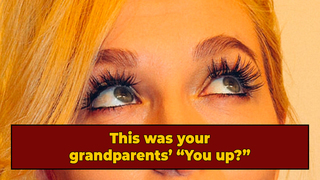Eye Rolling Was Your Grandparents' DTF Sign

Today, rolling your eyes usually means someone explained your own joke back to you or something. But if you'd responded that way before the '50s, they'd think, "Ah, very good, my keen intellect and sharp sense of humor have had its intended effect on my target's genitals." They'll probably think that anyway, but at least back then, they would have probable cause.
That's because rolling your eyes used to be a sign of excitement, particularly of the sexual variety. It's used in such a manner in literature, including Shakespeare and Milton, as early as the 15th century. And it was a common gesture of flirtation and affection in the 18th and 19th ones. As comical as that sounds, we scrunch up half of our faces as we close one eye to express the same thing today, so we can't exactly talk.

It's not clear why the meaning of eye-rolling shifted from horniness to annoyance, but we know approximately when and theoretically for what purpose. It started popping up in literature in the '60s and was cemented in the culture in the '80s, presumably as women (teen girls, specifically) became more empowered since it's largely a youthful and feminine phenomenon.
Don't Miss
It's not strictly confined to the mall, though. Researchers believe, like many ocular gestures, women began rolling their eyes as a low-aggression strategy for expressing dominance in a social situation, especially over other women, kind of like a feminine version of puffing out your chest. That still sounds pretty sexy in a sapphic BDSM kind of way, so make of it what you will.
Top image: PickPik